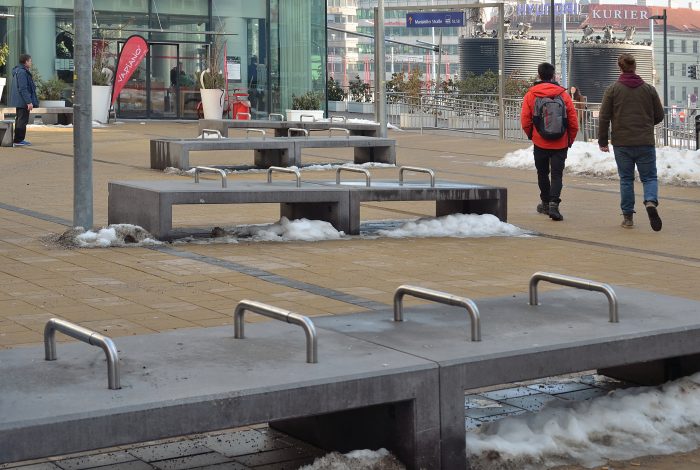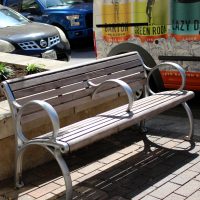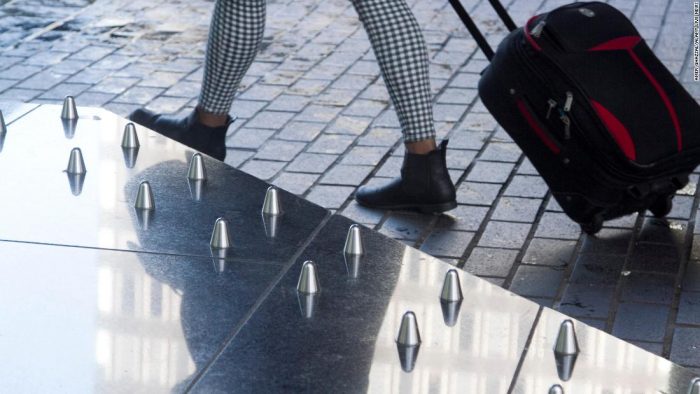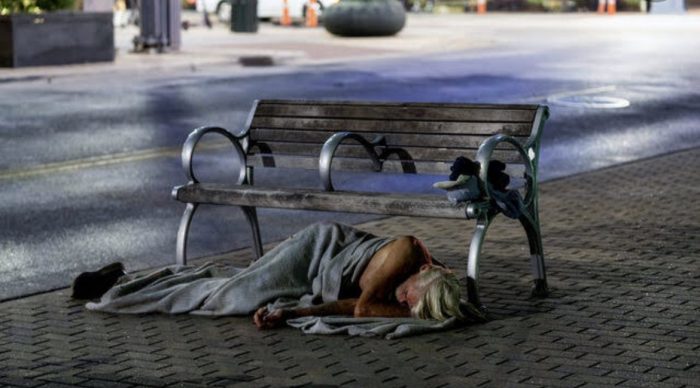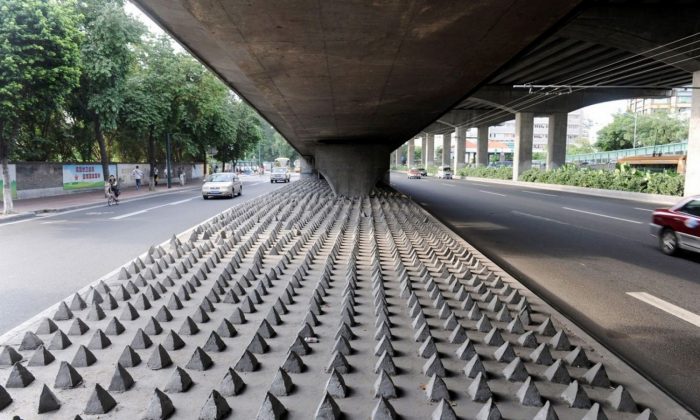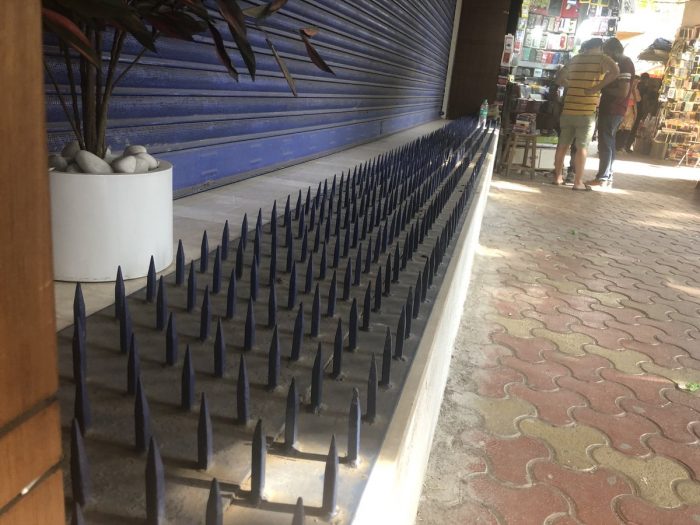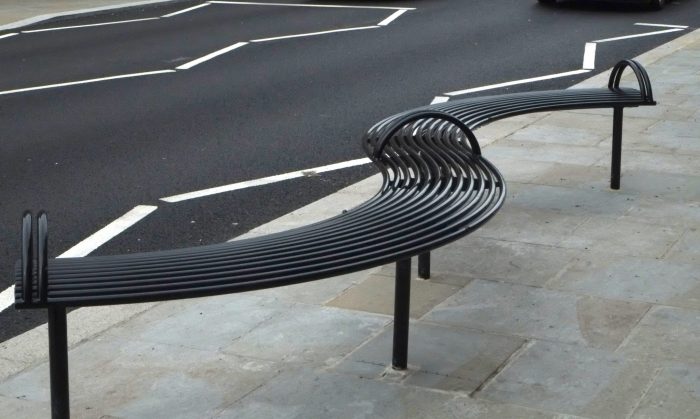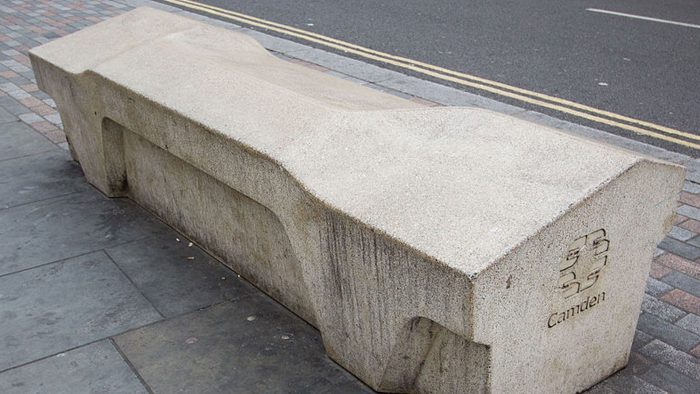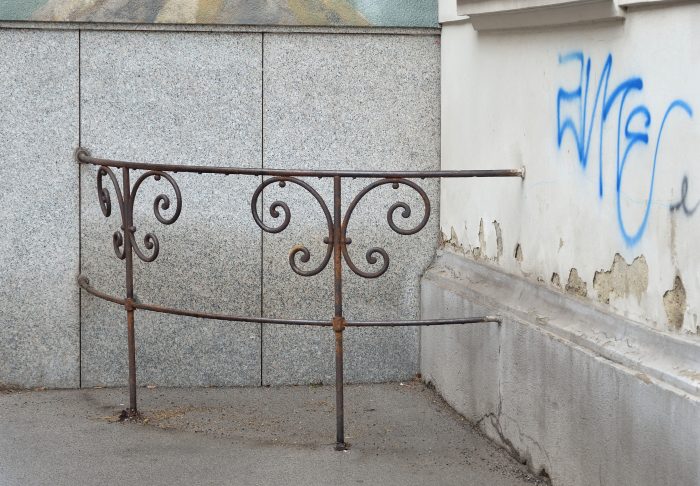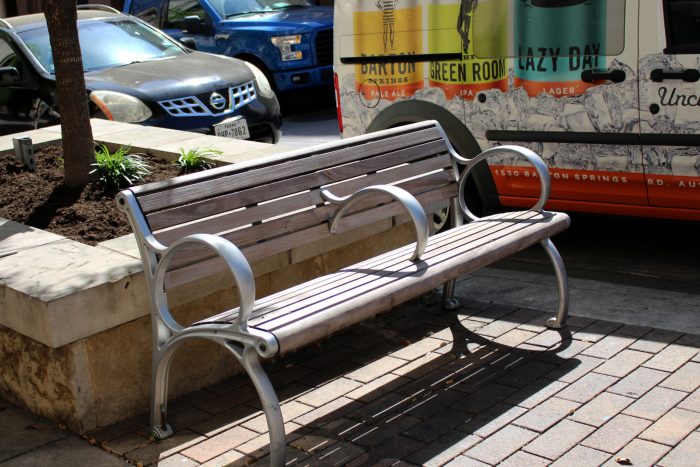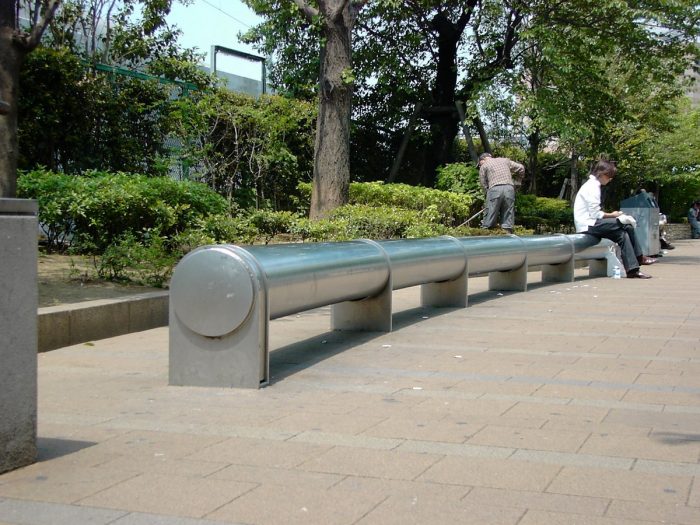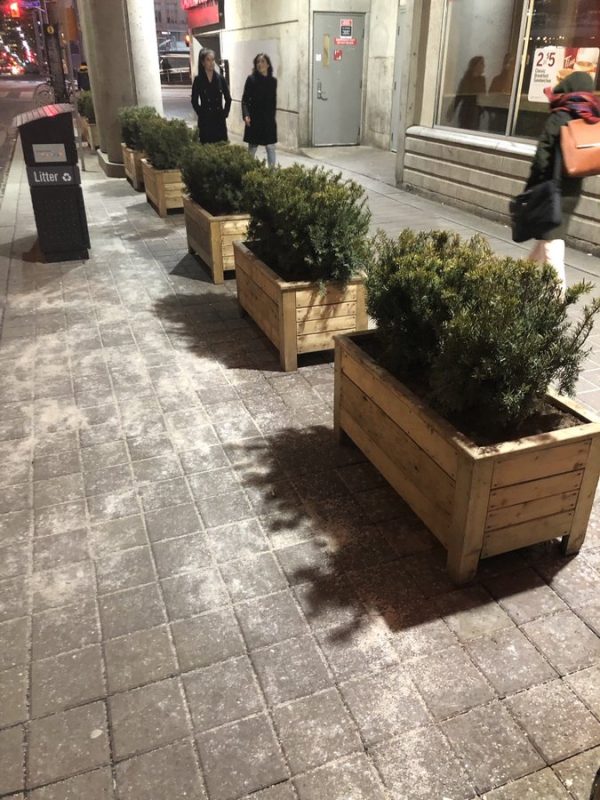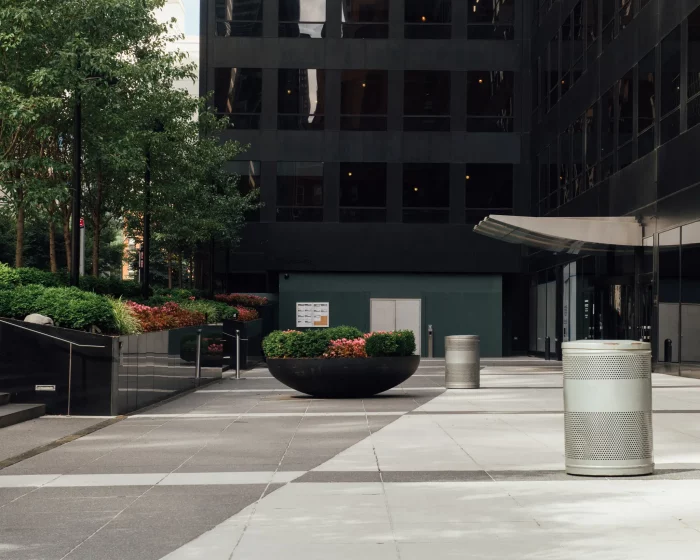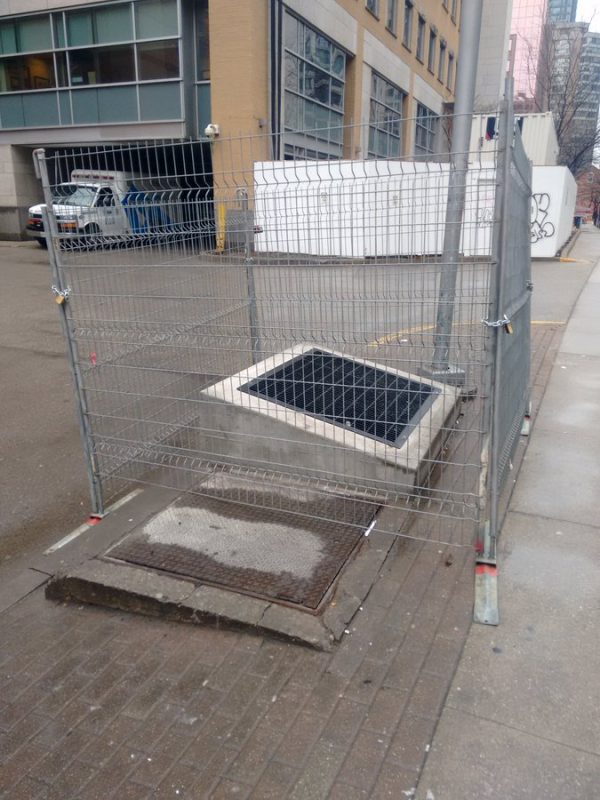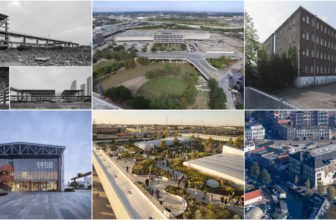When many cities are dealing with a homelessness crisis, some associate public spaces, and parks with the most brutal, hostile architecture examples, stating that it is to combat or prevent crime and help preserve order.
Typically, homeless persons looking for a place to rest or kids looking for a place to play are the populations targeted by hostile architecture. This approach not only goes against the fundamental principles of public space as accessibility, freedom of use, and equality, but it is also likely to degrade the quality of the area as a whole.
What is Hostile Architecture?
These powerful tactics, which use aspects of the built environment to limit behaviors considered antisocial, are a part of the urban design concept are hostile architecture, often referred to as defensive architecture.
While supporters argue that this form of urban planning is essential to preserve safety, maintain order, and deter undesirable behaviors like loitering, sleeping, and skateboarding. Others claim that hostile architecture intentionally targets the homeless, who depend on public spaces the most.
Hostile architecture pushes designing and constructing to a new level, where we purposefully build intending to create a less lovely and comfortable setting for the general population. We essentially deprive comfort to the majority of society of worries about potential or thought-to-be-less-than-ideal behavior in specific circumstances.
Also Read: 5 Hot Technologies to Transform Contemporary Architecture
- ©texasobserver.org
- ©cookinwtechno / Twitter
- ©Trey_Explainer/ Twitter
Hostile Architecture applications:
We will present some examples of how governments implemented hostile architecture in public areas below:
1) Security Cameras:
Surveillance is one of the most frequent types of hostile architecture. Although security cameras do not physically stop people from acting in a certain way, they can still limit undesired actions in public by allowing for remote supervision and raising the threat of punishment for socially unacceptable behaviors.
2) Spikes:
Hostile architecture can appear as bumps, spikes, or other pointed formations. You can find spikes generally positioned on ledges outside buildings, beneath roofs, close to stores, or other properties where people take refuge or rest.
3) Camping prohibitions:
The local authority often builds bike racks to keep people from camping out among the homeless. Similar to 2013, the Oregon Department of Transportation in Oregon, United States, placed sizable boulders in eight spots where temporary camps had been set up in Portland to discourage unauthorized camping close to the roadways.
4) Sleeping prohibitions:
In several big cities, authorities design benches to ensure no one can sleep on them. Because of these benches’ design, the user must rely on their feet to support them as the seat extends down at an angle. Another harsher bench design prevents users from laying across the chairs by placing armrests down the middle of the bench.
5) Fences or grates:
A typical exclusionary design is a fence or grate, frequently used to limit access to locations with weather protection, such as under stairs, over bridges, or next to hot air fan systems. An accurate application was in the spring of 2015 when the City of Stockholm, Sweden, built a 200,000 Kiloroentgen fence to keep homeless individuals from finding shelter beneath a stairway on Kungsholmen.
Also read:- How Visions of Futuristic Architecture Have Transformed in 100 Years
Hostile architecture examples: How it impacts homeless people?
The presence of homelessness and the application of anti-homeless architecture have grown in numerous cities worldwide. Here are some hostile architecture examples of this kind of urban planning that you might not have seen in your neighborhood.
1) Under-road spikes, Guangzhou, China:
These concrete spikes, which cover roughly 200 square meters beneath the Huangshi expressway, prohibit homeless individuals from using the bridge as a refuge. According to locals, people used to gather and socialize beneath the bridge before implementing these sharp spikes.
2) Anti-loitering spikes, Mumbai, India:
Numerous rows of sharp metal spikes surround the façade of this HDFC Bank branch. Locals immediately pointed out the possibly deadly consequence should a youngster, older person, or disabled person unintentionally fall onto the spikes despite the bank’s claims the spikes intend to reduce loitering.
3) Benches with curves and angles:
Have you ever wondered why someone would create something so uncomfortable, like inclined benches at a bus stop? Here’s another illustration of anti-homeless architecture. It is exceedingly challenging to lay down on something curved or sloped without sliding off, as you can probably guess. Thus, it discourages homeless people from staying overnight there.
4) Camden benches, London, England:
The Camden bench is “the ultimate anti-object” due to its ability to get more difficult control usage. Its irregular curves make it challenging for skateboarders to grind on and for people to lie on; its smooth surface makes it impossible to stow drugs in or throw trash through. Since its public appearance in 2012, the bench has come under fire from many quarters.
5) Corners with bars:
Even corners are not immune to the effects of hostile architecture. You may encounter blocked, or fenced-off corners across the street, which officials claim aims to discourage individuals from panhandling, loitering, or finding shelter there.
6) Arm-supported benches:
Although you might believe that armrests are merely for your comfort, they serve harmful purposes. They prevent you from lying on the bench as they obstruct its smooth surface.
7) Unorthodox benches, Tokyo, Japan:
Although these seats don’t have as sharply defined segments as those on the list above, their unusual shapes make it challenging for individuals to sit or relax on them. This tubing bench is impossible to lay on and gets sweltering in the summer and chilly in the winter, making it tough to unwind for the public, not only the homeless.
8) Street dividers:
Implementing greenery has always been a superb option, but these planters aren’t always what they seem to be. At least, it looks like an attempt to push homeless people away from the safe side of the street. The use of dividers to divert vehicles toward protected areas prevents the homeless from having a clear space of ground to sleep on.
According to The Eye Opener on Twitter, “Earlier today, Jason, the man who sleeps in front of the Tim Hortons at Victoria and Dundas streets, said police asked him to move across the street so these planters could be installed. The other side of the street is not sheltered from rain or wind. Story to come”.
9) A massive public space without seating options, Manhattan, New York:
Midtown Manhattan’s huge public plaza at East 56th Street and Third Avenue is home to one particularly hilarious instance. Office workers had to lean against a wall for a short break because there wasn’t a table or chair in the spacious public space. The message is, “Don’t hang out here. It doesn’t feel like a public space. It appears like they’re trying to restrict people from using it,” as Sean Orlando, an employer there, put it.
10) Fenced grates:
Fenced grates are another effort to prevent homeless people from gathering near them in cold weather for warming. Grates are popular in the winter since they are among the few places where the homeless can find warmth when the weather becomes chilly.
Hostile architecture has the drawback that it fails to address the homelessness situation. It only succeeds in making people who are already having a difficult time in life have a more challenging one. Making the homeless find other places to sleep won’t end homelessness.
The most frequently asked questions:-
Why is hostile architecture good?
Hostile architecture intends to prevent people from using public places in unacceptable ways. This type of architecture may involve anything from finding inventive surfaces to skate off to sleeping on benches. The goal is to prevent unpleasant behavior from occurring.
Is hostile architecture legal?
The Eighth Amendment forbids the state from punishing an involuntary act or condition if it is the unavoidable consequence of one's status or being, according to Judge Berzon, drawing a conclusion that can be applied to hostile architecture.
What is the purpose of hostile architecture?
Hostile architecture is an urban planning technique that uses components of the built environment to direct or limit behavior consciously. Restricting the physical behaviors, they can engage in. It frequently targets groups who use or depend on public space more than others, such as teenagers, the impoverished, and the homeless.
Can hostile architecture help homeless people?
Unfortunately, the answer is no, as hostile architecture restricts how homeless people use public places and inhibits them from sticking there for quite a while now.
Does san Francisco have hostile architecture?
Hostile architecture can be found all over America, but San Francisco stands out for having such a large amount of it.


